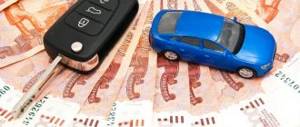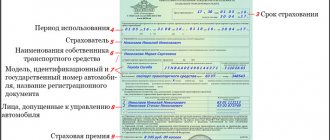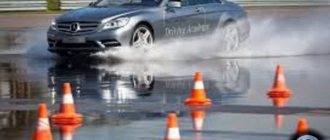What is considered dangerous driving?
The legislator described dangerous driving in paragraph 2.7 of the traffic rules. It includes six main violations.
Do not give way when changing lanes. The driver changes lanes into the adjacent lane and creates interference for those already driving in it - they are forced to brake sharply, and there is a threat of an accident.
Change from lane to lane. This is prohibited during heavy traffic, that is, in a traffic jam. When all lanes are occupied, you can only change lanes to turn, make a U-turn, stop, or avoid an obstacle, such as cars that have stopped due to an accident.
Don't keep your distance. The driver is too close to the car that is driving in front of him. By law, he is required to maintain a distance that will allow him to avoid crashing during sudden braking.
Drive between the rows. The lateral interval is often not observed by motorcyclists who ride between cars.
Brake sharply. Automobile drivers sometimes overtake a car, and then brake sharply in front of it. According to the rules, a driver can only brake like this if he is trying to prevent an accident.
Interfering with overtaking. A bad driver may not allow himself to be overtaken. To do this, he increases his speed when another car is ahead of him in the adjacent lane. If the road is two-lane and the other driver is driving in the opposite direction, this behavior can lead to a head-on collision.
These situations are considered dangerous driving if the driver commits more than two violations in a row and creates a risk of an accident.
What is dangerous driving? This new term appeared in the Traffic Rules of the Russian Federation. Some people also call it aggressive driving, but the official name is “reckless driving.”
The resolution on dangerous driving came into force on June 8, 2021. The official name is Decree of the Government of the Russian Federation dated May 30, 2021 No. 477 “On amendments to the Traffic Rules of the Russian Federation.”
Clause 2.7 of the Traffic Rules of the Russian Federation has been supplemented with a ban on dangerous driving. And here an explanation is given of what constitutes dangerous driving.
Paragraph 2.7 of the traffic rules itself lists what the driver is prohibited from doing. And now the number of these prohibitions has been supplemented by the ban on dangerous driving.
Quote:
The driver is prohibited from:
dangerous driving, expressed in the repeated performance of one or several consecutive actions, consisting of failure to comply with the requirement to give way to a vehicle using the right of way when changing lanes, changing lanes in heavy traffic when all lanes are occupied, except when turning left or right , turning, stopping or driving around an obstacle, failure to maintain a safe distance to the vehicle moving in front, failure to maintain a lateral interval, sudden braking, if such braking is not required to prevent a traffic accident, obstruction of overtaking, if these actions resulted in the driver creating a situation in the process of traffic , in which its movement and (or) the movement of other road users in the same direction and at the same speed creates a threat of death or injury to people, damage to vehicles, structures, cargo or other material damage.
Conclusion:
What is included in the concept of dangerous driving?
Comments
Alexander 06/06/2016 19:58 It is necessary to add a ban on driving at too low a speed unless necessary, while preventing overtaking.
Reply | Reply with quote | Quote
Vasily 06/07/2016 13:48 I quote Alexander:
It is necessary to add a ban on driving at too low a speed unless necessary, while discouraging overtaking.
This ban has existed for 50 years Reply |
Reply with quote | Quote Alexander 06/13/2016 20:38 But apparently not everyone knows about him.
Reply | Reply with quote | Quote
Levon 06/06/2016 20:14 Good time everyone. Personally, I have a negative attitude towards the innovation; there will always be boors on the roads. The most important thing is to turn on your turn signals before maneuvering. but this is not in the situation, and this is what infuriates me most of all. Now the cops will have an extra reason to stop him. And a remark about: ... if the driver simply accidentally did not give way, or changed lanes in a traffic jam... How do you mean “accidentally”, how will you prove that it was accidental? In my opinion it is very controversial.
Reply | Reply with quote | Quote
Valery 06/06/2016 20:52 The most important thing is to turn on the turn signals before the maneuver. but this is not in the regulations... >It is in the traffic rules - turn it on in advance. These words have been there for ages. How do you understand “by chance”, how do you prove that it is by chance? >the key word is not “randomly”, but “repeatedly”.
Reply | Reply with quote | Quote
Vladimir 06/06/2016 20:20 The feeding trough for the Gaits has increased significantly. It's time to switch to a bike.
Reply | Reply with quote | Quote
Alexander 07/17/2016 17:25 It’s been a year since I gave up my car, not only because of the gays, but also because of the lack of roads, problematic motor insurance, taxes of various kinds. In short, our government has us and since there are no special objections, then and this will continue. Something like this.
Reply | Reply with quote | Quote
Alexander Sokolov 06/06/2016 21:28 Everything is as usual, all the laws in Russia are NOT for people, this applies not only to road rules, all our laws are based on the following: to squeeze something, to squeeze out money, to punish, not give, confuse, and drive endlessly through the authorities.... and so on.
Reply | Reply with quote | Quote
Max 06/06/2016 23:02 I can’t imagine how they will track this. So far it looks like the delirium of some drug addict. But the 8th is just around the corner - we'll see.
Reply | Reply with quote | Quote
Vitaly 06/07/2016 00:09 failure to comply with the requirement to give way when changing lanes, and the rules for changing lanes no longer apply?
Reply | Reply with quote | Quote
Nikolay 06/07/2016 08:44 The traffic rules already have the term “Danger to traffic” - a situation that arose during road traffic in which continued movement in the same direction and at the same speed creates a threat of a traffic accident. What is the essence of the new? Maybe the “old” term should be removed? or improve it?
Reply | Reply with quote | Quote
Svetlana 06/14/2016 12:34 Dangerous traffic and dangerous driving are completely different things - read the rules.
Reply | Reply with quote | Quote
Dmitry 06/07/2016 09:55 As the majors violated, so they will violate. The father or mother with the money will pass by and scold this body. How many people have these scum sent to the next world and made disabled! For such purposeful e!!!, daring driving should be deprived of the right to drive. for 2-3 years and close for months without the opportunity to excuse these sons!!! A normal driver who respects himself and other road users will not make such senseless maneuvers!
Reply | Reply with quote | Quote
Vladimir 06/07/2016 10:54 I completely agree with Dmitry about the “majors” and the actions of their relatives. Traffic rules are sufficient for accident-free driving. And all these innovations and additions will only worsen the situation of conscientious drivers and give the traffic police a free hand. After all, everyone has their own understanding of whether it is “dangerous driving” or not. If the fines and punishments that are already in the traffic rules were implemented, there would be no need to make additions, and the violators, who could not pay off and would walk for 1.5-2 years, would think next time whether it is worth violating.
Reply | Reply with quote | Quote
Alexander 06/07/2016 17:06 Another vague nonsense that will further untie the hands of traffic cops. No specifics. It is unclear how this dangerous driving will be recorded. Inspectors will be able to draw up a report on anyone. Laws must be written specifically and taken literally. Their arbitrary interpretation (depending on whoever’s benefit) is unacceptable. The whole point of this innovation, like everything else, is to replenish the empty treasury at the expense of drivers.
Reply | Reply with quote | Quote
Vadim 06/07/2016 17:35 This should have been introduced into law a long time ago. These reckless drivers are already tormented. It may not last long, but it will calm them down a little. Just wondering how this will be recorded? The treasury may not be completely replenished after these innovations, but some unscrupulous traffic cops may.
Reply | Reply with quote | Quote
Vladimir 06/14/2016 07:50 To prove the repeated violation, it needs to be recorded. How to do it ? In your pictures it certainly turned out beautiful and noticeable. But it was practically impossible to capture it on video more than once. I think that this will become possible if every car has a GLONASS system. But before that it’s still like walking to the moon. That’s why the police will fine you according to their “laws”, don’t even go to your grandma!!!!!!
Reply | Reply with quote | Quote
Alexander 06/14/2016 22:03 Judging by the clips, this “dangerous driving” innovation can only be tracked and recorded from a helicopter or drone. Therefore, I repeat, all this is nonsense and just another feeding ground for traffic cops. The one who has the opportunity to go to court and smash such protocols to smithereens.
Reply | Reply with quote | Quote
Levon 07/17/2016 18:30 I quote Valery:
The most important thing is to turn on your turn signals before maneuvering. but this is not in the regulations... >It is in the traffic rules - turn it on in advance. These words have been there for ages. How do you understand “by chance”, how do you prove that it is by chance? >the key word is not “randomly”, but “repeatedly”.
"Repeatedly by accident."
New term. Reply | Reply with quote | Quote Nick 11/11/2016 23:02 This ban, like many others, introduces differentiation of car enthusiasts by income (into patsaks and chatlans). They seem to be hinting that there is no point in pretending to be cool if there are no good friends in the Ministry of Internal Affairs and the income is less than a million a month. Still, with an income of 30 tr. and 1 million rubles per month, a fine of even 5,000 looks completely different. By the way, in Moscow, as the capital of dollar millionaires, fines for dangerous driving amount to 100 thousand rubles. will change little.
Reply | Reply with quote | Quote
Update list of comments
Add a comment
JComments
What are the criteria for dangerous driving?
Each of these violations by itself does not mean dangerous driving. To classify aggressive driver behavior, two additional conditions were introduced.
More than two violations in a row. The driver must break the rule several times one after another. The frequency with which violations must occur is not specified in the law. According to legislators, this creates a danger for other road users: they cannot predict the driver’s behavior and react adequately to avoid an accident.
Threat of an accident. Another prerequisite for dangerous driving is that the driver creates a situation in which other road users are forced to change direction and speed, otherwise they risk getting into an accident.
Dangerous driving law
Law on dangerous driving - Resolution No. 477 of the Government of the Russian Federation “On amendments to traffic rules”, adopted on May 30, 2021.
A new type of violation has been added to the traffic rules - dangerous driving. This resolution was signed by the Prime Minister of the Russian Federation.
The punishment for such driving has not yet been invented, but it is planned to introduce criminal liability for this and deprivation of rights in case of repeated violation.
The resolution will affect those who behave incorrectly on the highway, endangering not only their own lives, but also others - drivers and pedestrians.
The purpose of the law is to encourage motorists to adhere to traffic rules and not create emergency situations on the road.
Basic provisions of the standard
The text of the law on dangerous driving is set out in paragraph 2.7 of the Road Traffic Regulations. You can get acquainted with it by following the link.
When will it take effect
The term "dangerous driving" was added to the road rules on June 8, 2021. The bill was accepted for consideration, but a final decision has not yet been made.
It is not known exactly when the law on dangerous driving will come into force. The estimated date is July 1, 2021.
How they will look for violators, who will keep order and which authority to contact is not yet known.
The new bill may not work because aggressive driving is almost impossible to prove.
A video or photographic recorder may not work - and they are the main evidence of a violation on the road. Until the law is fully approved, the statistics of road accidents will not improve.
Penalties for violations
To prove the driver’s guilt, not only photo and video recording of the violation is required, but also step-by-step recording, which proves the commission of dangerous maneuvers several times in a row.
That is, bringing the offender to justice is not so easy. For failure to comply with driving rules (for dangerous driving), the driver faces an administrative fine.
Its size is influenced by the type of driving that threatens the safety of other drivers on the road. The penalty is regulated by Article 12 of the Code of Administrative Offences. Types of fines:
| For failure to give way to another vehicle | Warning or fine of 500 rubles |
| Changing from one row to another | 1500 rubles |
| Failure to maintain distance and lateral spacing | 1500 rubles |
| Sharp braking | 1500 rubles |
| Obstruction of overtaking your own vehicle | 1500 rubles |
In 2021, the fine for dangerous driving will be 5 thousand rubles. In the future, they want to tighten the punishment - confiscate the driver’s license or assign an arrest for a specific period of time.
Reasons for imposing a penalty:
| Violation of DD rules several times in a row | Different or the same |
| Creating a situation that threatens the safety of other participants | On the road or causing property damage |
If there was no movement at the time of the accident or death, driving is considered safe. The Code of Administrative Offenses allows a 50% discount when paying a fine. Video: law on dangerous driving. The auto louts and reckless drivers will howl. It is valid for 20 days from the moment the resolution comes into force. You should not pay the fine before the violation data is entered into the patrol service database.
To avoid being fined for dangerous driving, you must comply with the following requirements:
- do not violate traffic rules;
- install a video recorder in the car;
- perform maneuvers smoothly, turn on the turn signals;
- keep your distance;
- do not succumb to the provocations of other drivers.
On the road you need to be careful and prudent.
What is the fine and for what?
Since 2021, the traffic police has been seeking to have a new article 12.38 on dangerous driving introduced into the Code of Administrative Offences. In this case, a fine of 5,000 rubles will be imposed for aggressive behavior on the road. The bill on the new fine passed the first reading in the State Duma, but has not yet been adopted.
Daria Ponomareva, forensic expert-autotechnician "Auto MFC" Before the bill is adopted, it must go through a global approval procedure in different authorities and departments. Meetings on the bill were repeatedly postponed because expert opinion on the issue was needed.
The Administrative Code already contains penalties for certain violations:
- change lanes and do not give way to a car in this lane - 500 rubles under Part 3 of Art. 12.14 Code of Administrative Offences;
- violate the rules for positioning a car on the road: change lanes in a traffic jam, do not maintain distance and lateral intervals between cars, brake sharply, prevent overtaking - 1,500 rubles under Part 1 of Art. 12.15 Code of Administrative Offences.
By law, these fines can be paid with a 50% discount if you manage to do this in the first 20 days.
The problem of identifying violators
It is quite difficult to identify violators who ignore traffic rules and drive aggressively.
- Firstly, not all photo/video recording devices do not detect violations such as unreasonable sudden braking or obstruction of overtaking. Only traffic police officers can record a violation, which leads to the registration of 1 in 100 cases of dangerous driving. In addition, inspectors must have evidence, video recording of dangerous maneuvers. Not all traffic police stations are equipped with suitable video recording devices, and even more so, ordinary employees traveling into the city;
- Secondly, there is a problem with determining the type of violation. The definition of dangerous driving includes quite a few violations of traffic rules, but it is not yet clear how to punish in the end: for dangerous driving or for failure to maintain distance and side intervals.
- Thirdly, legislators say that any driver who witnesses or is a victim of an accident due to the dangerous driving of a third party, and who has evidence of a violation in the form of a video recording, can contact the traffic police with a request to find and punish the offender.
How the traffic police proves dangerous driving
Under the presumption of innocence, the driver is not required to prove that he has violated anything. This must be done by traffic police officers. The exception is when the violation was caught on a video camera. Cases of dangerous driving cannot be photographed, so the traffic police proves them in the usual way.
Protocol. The inspector stops the violator and draws up a protocol to record the violation. A copy remains in the hands of the driver.
Resolution. Later, the traffic police, together with the driver or in his absence, conducts an analysis. Based on the results, the traffic police sends the driver a decision on an administrative violation. It arrives by mail, but not always - it’s better to check your fines.
How to dispute. If the driver does not agree with the decision, he can file a complaint addressed to the head of the traffic police department that issued the fine. The application can be sent through the traffic police website, on the application acceptance page. There are 10 days for this from the date of the decision. Another option is to file a complaint in court.
Is the inspector required to prove dangerous driving?
If we move away from the plane of dangerous driving and consider judicial practice, we get the following: the inspector does not have to prove that the driver committed an offense. The courts almost always trust inspectors, who work for the benefit of society. People are deprived of their driver's licenses or issued orders for penalties only on the basis of the inspector's words. No one is asking for evidence.
On the other hand, not so long ago the Supreme Court refuted this categorical right of the traffic police. He ruled that a driver cannot be prosecuted solely on the basis of the protocol. There must be an evidence base.
Does the Supreme Court's decision work? Not really. The courts continue to make decisions based on interaction with the traffic police. So far, there are few precedents for trusting drivers.
The situation with dangerous driving will be about the same. There are many controversial issues, there are criteria that cannot be assessed and measured. Consequently, there is no evidence that will actually work for the benefit of citizens.
Of course, there must be responsibility for dangerous maneuvers, violations, etc., but there must also be a system of assessments based on which situations can be realistically assessed. But maybe over time these evaluation criteria will be finalized.
Remember
- Dangerous driving under the law is when a driver violates the rules of maneuvering and changing lanes more than two times in a row, thereby creating a risk of an accident.
- There is no fine for dangerous driving, but there is a fine for improper lane changing and maneuvering, from 500 to 1,500 rubles.
- These fines can be paid with a 50% discount in the first 20 days.
- Such violations are not recorded by cameras. The inspector must stop the violator, draw up a report, and later the traffic police will send a resolution.
- If you do not agree with the violation, you can appeal it - to the traffic police or through the court.
All articles by the author: Ilya Novikov
General points
Previously, Russian drivers were issued with incomprehensible fines for aggressive driving or for creating an emergency situation on the road.
If necessary, the traffic police inspector put pressure on the driver and drew up a report. This amounted to corruption.
After numerous appeals from drivers to the court, the state decided to revise the rules regarding dangerous driving.
It is not easy to detect a violator who does not comply with traffic rules:
| Not every photo or video recorder | A violation such as sudden braking or obstruction of overtaking is determined. Fixation is possible by a traffic service employee |
| It is difficult to determine the type of violation | The definition of “dangerous driving” contains many traffic violations |
Any person who has witnessed or been injured in a traffic accident due to aggressive driving has the right to contact the patrol service with a request to find the offender and punish him.
Signs of such driving are:
- sudden stop without keeping a distance;
- violation of lane change rules;
- dangerous overtaking;
- obstacle to overtaking;
- approaching the car at a critical distance;
- advance maneuvers;
- violation of lateral distance;
- failure to give way to vehicles that have the right of way;
- unacceptable speed;
- maneuvers at pedestrian crossings.
Such actions cause accidents on the road, injuries and deaths, and property damage. Until the law came into force, it is not entirely clear what exactly the punishment for dangerous driving will be.
The State Duma was offered many options – a fine of 500 rubles, later – 5 thousand, deprivation of a driver’s license and others.
None of them have yet been approved by law. If the law is approved, amendments will be made to the Code of Administrative Offenses regarding penalties for dangerous driving.
Definition of the term
Dangerous driving is the frequent commission of one or more traffic violations.
Conflict situations on the road cause traffic accidents or slow down traffic.
Driving a car is considered unsafe in the following cases:
| The driver simultaneously performed several prohibited maneuvers | Violated one of the points of the Traffic Rules or neglected other points (cut off a vehicle, did not give way to it) |
| The driver created the situation | In which his car or other vehicles became dangerous to surrounding people |
Dangerous driving is recorded and recorded by a traffic police officer.
What are typical violations?
Unsafe driving is divided into the following types: “checkers”, “nervous”, “hurry”, “beds (driving between rows)”, “teacher”, “stubborn”.
| "Toropygi" | A type of driving in which the driver does not maintain a safe distance from the car in front. You also need to monitor the spacing on the sides between cars. In accordance with the traffic rules, it is the responsibility of the motorist to maintain such a distance from the car in front that will allow him to avoid a collision with it. Experts recommend focusing not on distance, but on time, which is enough to compare with this vehicle |
| "Stubborn" | A type of driving when the driver accelerates and interferes with overtaking the car following behind. In such a situation, both can be guilty. The driver who is overtaking must be sure that he is not interfering with other motorists. The person being overtaken should not speed up if he notices that they are trying to overtake him. |
| "Teacher (educator)" | A type of control in which the driver specifically slows down in front of the vehicle ahead. In this case, it will be difficult to prove guilt, since it is unknown whether the braking occurred on purpose, or the driver was trying to avoid an accident. There is no direct article in the Code of Administrative Offenses with penalties for this violation yet. According to experts, it is almost impossible to establish whether the braking was intentional or whether the driver was avoiding an accident in this way. It is difficult to prove whether the action was intentional or not |
| "Checkers" | This type of driving, when the driver for some unknown reason changes lanes from one lane to another, while the lanes are fully loaded, creates an emergency situation. If the traffic is heavy and all lanes are occupied, you can change them only in cases of turning left or right, stopping or avoiding obstacles |
| "Beds" | Driving along the lane separation line. It is often used by motorcyclists |
| "Nervous" | Driving in which a motorist gets in the way of a car trying to overtake him. According to traffic rules, motorists are required to give way to vehicles moving in the same direction without reducing speed. |
What the expert says is that the main requirement for drivers when changing lanes is not to force another motorist to slow down.
The main problem with this is incorrect training in a driving school, which teaches you to give way when changing lanes and stop.
But you need, on the contrary, to pick up speed and only after that fit into the free space. An equally dangerous type of driving is “drifting” - driving in which a citizen sends the car into a controlled skid.
Where to find the details for paying the state fee to the Moscow Arbitration Court, see the article: payment of the state fee to the court. Read the procedure for registering dismissal in the process of transferring an employee to another organization here.
You can watch a video example of each type of dangerous driving on the website. Regardless of the type of dangerous driving, offenders face the same penalties.










